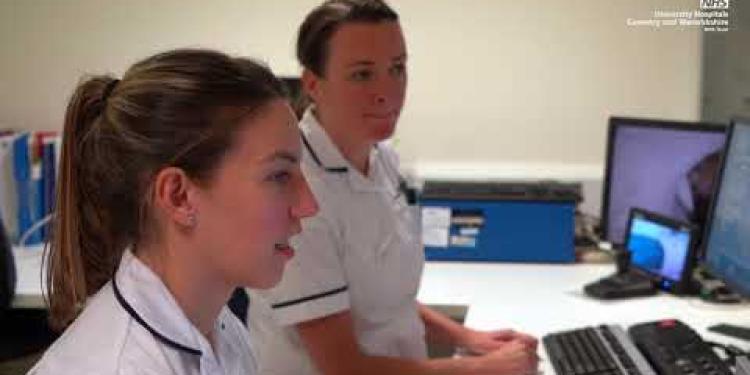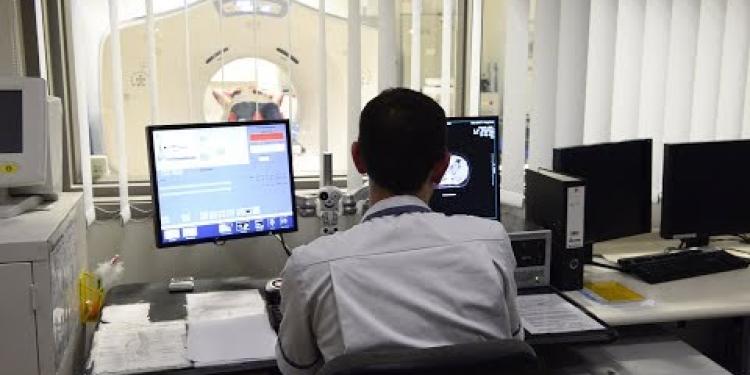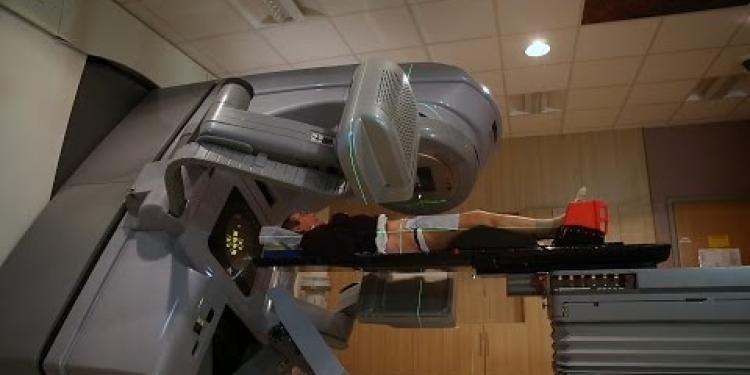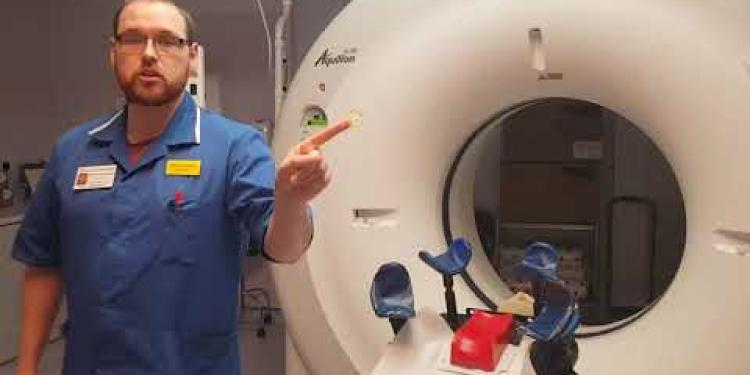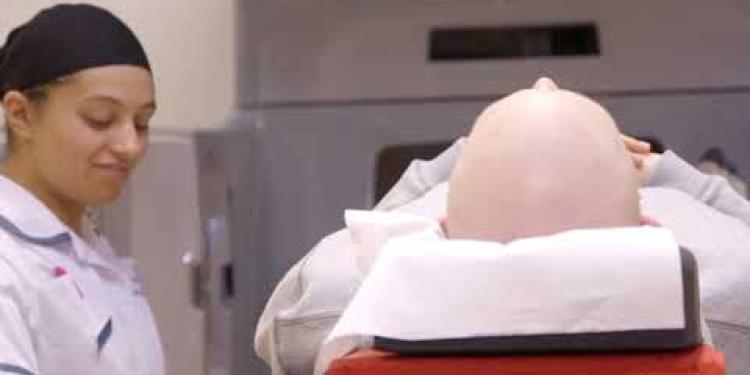Important Information On Using This Service
- Ergsy carefully checks the information in the videos we provide here.
- Videos shown by YouTube after a video has completed have NOT been reviewed by ERGSY.
- To view, click the arrow in the center of the video.
Using Subtitles and Closed Captions
- Most of the videos you find here will have subtitles and/or closed captions available.
- You may need to turn these on and choose your preferred language.
Turn Captions On or Off
- Go to the video you'd like to watch.
- If closed captions (CC) are available, settings will be visible on the bottom right of the video player.
- To turn on captions, click settings.
- To turn off captions, click settings again.
Find A Professional
Videos from Ergsy search
-
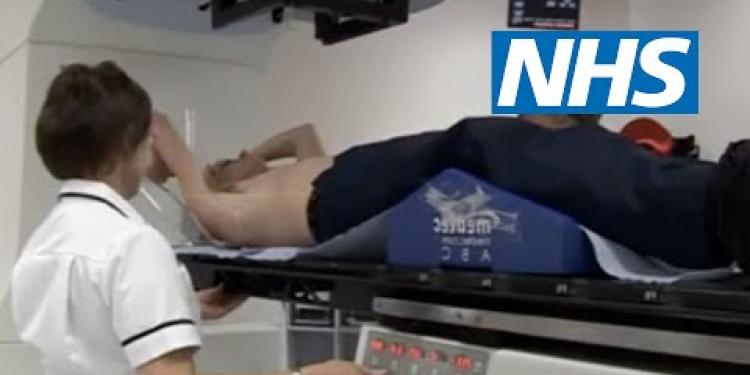
Cancer treatment: what happens during radiotherapy? | NHS
-

Royal Berkshire NHS Foundation Trust: Radiotherapy for head and neck cancers
-
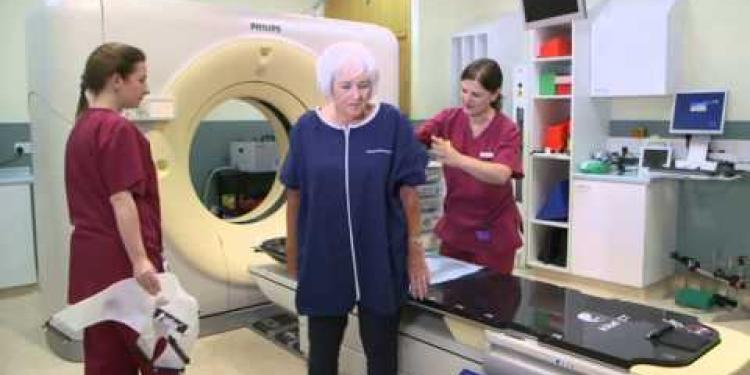
Radiotherapy to the Head and Neck: A Guide for patients and their carers
-
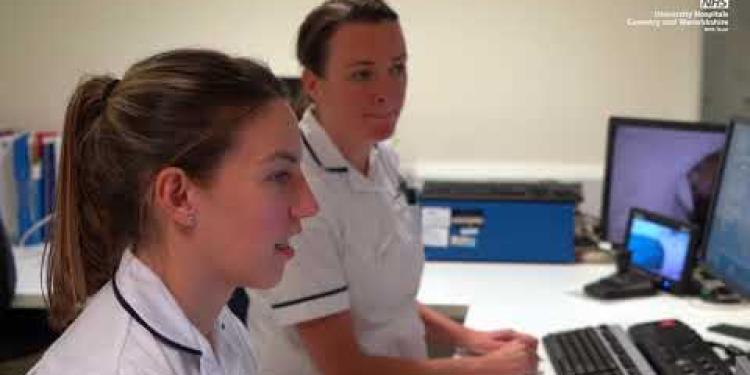
Radiotherapy Services at University Hospital
-
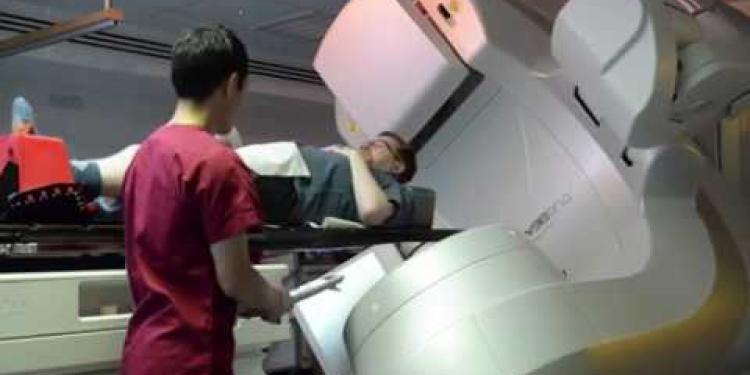
A Radiotherapy appointment in east and North Hertfordshire
-
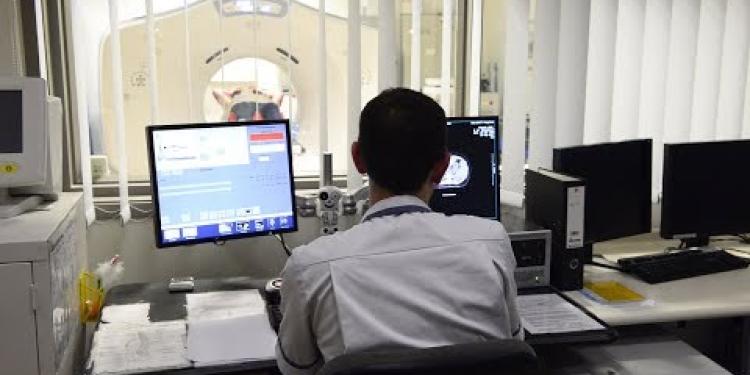
Having radiotherapy for breast cancer - 3 Videos
-

What is it like having Prostate Radiotherapy treatment?
-

Royal Berkshire NHS Foundation Trust: Radiotherapy for prostate cancer
-
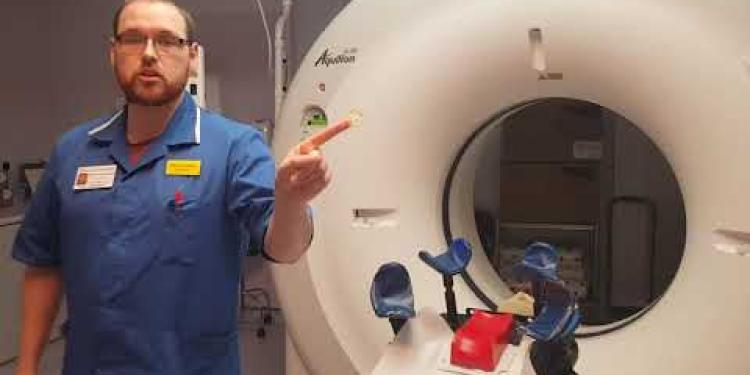
Radiotherapy CT scanner
-
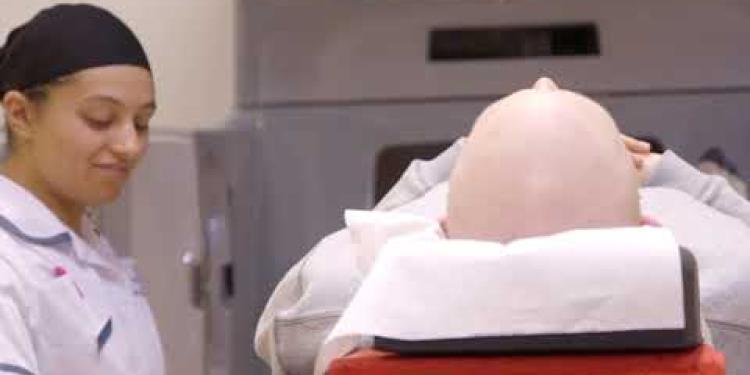
What is Radiotherapy, and its use in treatment for cancers?
More Videos of Interestdiagnosis
Related Videosdiagnosis
During a radiotherapy session, a patient undergoes a carefully orchestrated medical procedure aimed at targeting and treating cancerous tumors using high-energy radiation. The process typically involves several key steps:
- Treatment Planning: Before the session begins, a comprehensive treatment plan is developed by a team of healthcare professionals, including radiation oncologists and medical physicists. This plan outlines the specific dose of radiation, the angles from which the radiation beams will be delivered, and the duration of the treatment course. Advanced computer software is used to precisely calculate these parameters, ensuring that the radiation is focused on the tumor while sparing nearby healthy tissues.
- Patient Setup: Once the treatment plan is established, the patient is positioned on a treatment table, often using immobilization devices to maintain a consistent position throughout each session. Aligning the patient accurately with the planned treatment field is critical to the success of radiotherapy.
- Radiation Delivery: During the actual session, the patient is typically alone in the treatment room. Highly specialized machines, such as linear accelerators, deliver the prescribed radiation beams to the targeted area. The patient is carefully monitored remotely by radiation therapists and medical staff through closed-circuit cameras and intercoms.
- Treatment Duration: The duration of a radiotherapy session varies depending on the type of cancer, the treatment technique, and the prescribed dose. Some sessions may take only a few minutes, while others may require longer exposure times. Patients usually receive multiple sessions over several weeks, following the treatment plan.
- Minimal Discomfort: Radiotherapy itself is generally painless. Patients might hear the machine moving or buzzing during the session, but they should not feel the radiation. It's essential to remain still and follow the therapist's instructions for proper positioning.
- Side Effects: Radiotherapy can cause side effects, which vary depending on the treated area. Common side effects include fatigue, skin irritation, and localized discomfort. These side effects are closely monitored and managed by the medical team, and they usually improve after the completion of treatment.
- Post-Treatment Evaluation: After completing the prescribed sessions, patients may undergo follow-up evaluations, including imaging and clinical assessments, to assess the treatment's effectiveness and monitor for any potential long-term effects.
In summary, a radiotherapy session is a meticulously planned and precisely executed medical procedure aimed at treating cancer by delivering targeted radiation while minimizing damage to healthy tissues. The process requires a collaborative effort among healthcare professionals to ensure the best possible outcome for the patient.
Cancer Treatment: What Happens During Radiotherapy? | NHS
Introduction to Radiotherapy
Radiotherapy is a treatment option used to destroy cancer cells with high-energy radiation. It aims to target and kill cancer cells while minimizing damage to surrounding healthy tissues. This form of treatment can be used alone or in conjunction with other treatments such as surgery, chemotherapy, or hormone therapy to enhance efficacy.Types of Radiotherapy
There are two main types of radiotherapy: external beam radiotherapy and internal radiotherapy. External beam radiotherapy is the most common, where a machine directs radiation beams at the cancer. Internal radiotherapy involves placing radioactive material inside the body, either directly into or near the tumor.Preparation for Radiotherapy
Before starting treatment, you'll have a planning session known as a simulation. During this session, a radiotherapy team will use imaging scans such as CT or MRI to pinpoint the exact location of the tumor. This helps in creating a customized treatment plan, ensuring the radiation targets the cancer cells precisely while sparing as much healthy tissue as possible. Skin markings or tiny tattoos may be used to guide the radiotherapy accurately.During Radiotherapy Sessions
External radiotherapy treatments are typically given on an outpatient basis. Each session lasts about 10-30 minutes, although the actual time you spend receiving radiation is usually only a few minutes. You will lie on a treatment table, and the radiographer will position you and the machine correctly. It's crucial to stay very still during the treatment to ensure precision. The radiographer will then leave the room but will monitor you via CCTV and can communicate with you through an intercom.Side Effects of Radiotherapy
While radiotherapy aims to minimize damage to healthy cells, some side effects are inevitable. Common side effects include skin irritation in the treated area, fatigue, and hair loss in the targeted region. More specific side effects may depend on the part of the body being treated. For example, radiotherapy to the abdomen might cause nausea, while treatment to the head could result in headaches. These side effects can vary from person to person and will often improve a few weeks after treatment ends.Follow-Up Care
After completing radiotherapy, regular follow-up appointments will be scheduled to monitor your progress and manage any ongoing side effects. Your healthcare team will use these appointments to check your recovery, provide support, and address any concerns you may have.Conclusion
Radiotherapy is a vital component of cancer treatment, offering a highly targeted approach to destroy cancer cells. The NHS provides comprehensive support throughout radiotherapy, from initial planning to follow-up care. Understanding what to expect can help ease worries and prepare you for the journey toward recovery.Frequently Asked Questions
What is radiotherapy?
Radiotherapy is a cancer treatment that uses high doses of radiation to kill cancer cells and shrink tumors.
How is radiotherapy administered?
Radiotherapy can be administered externally using a machine outside the body, or internally through radioactive material placed inside the body near cancer cells.
How long does a radiotherapy session take?
Each radiotherapy session typically lasts between 10 to 30 minutes, but the actual time the machine is on may only be a few minutes.
Do I need to prepare for radiotherapy?
Preparation depends on the type of radiotherapy. For external treatment, you'll lie still on a treatment table, and you may need to follow specific dietary or hygiene advice.
Will I feel any pain during radiotherapy?
Radiotherapy itself is painless, but lying still during the procedure might cause discomfort for some. Side effects, which can be painful, might develop after treatment.
How many radiotherapy sessions will I need?
The number of sessions depends on the type and stage of the cancer, typically ranging from daily sessions over a few weeks to a single treatment.
What are the side effects of radiotherapy?
Common side effects include skin reactions, fatigue, and changes to the treated area. These can vary based on the site being treated.
Will radiotherapy make me radioactive?
External radiotherapy will not make you radioactive. Internal radiotherapy might require special precautions for a short time.
Can I continue my normal activities during radiotherapy?
Many people can continue with their daily activities, but it's important to listen to your body and rest when needed as fatigue is a common side effect.
What should I do if I experience side effects?
Report any side effects to your radiotherapy team. They can provide treatments or advice to help manage symptoms.
Is radiotherapy used alone to treat cancer?
Radiotherapy can be used alone, but it's often combined with other treatments such as surgery, chemotherapy, or immunotherapy.
Can I eat and drink normally during radiotherapy?
You may need to follow specific dietary guidelines depending on the area being treated. Always consult with your radiotherapy team for personalized advice.
Will I lose my hair during radiotherapy?
Hair loss can occur, but only in the area being treated. For example, radiotherapy to the head may cause scalp hair loss.
Can radiotherapy affect fertility?
Fertility can be affected if reproductive organs are in the treatment area. Discuss fertility preservation options with your doctor beforehand.
How will I know if radiotherapy is working?
The effectiveness of the treatment will be monitored through regular follow-up appointments and imaging tests.
Useful Links
Useful links from: What is Radiotherapy, and its use in treatment for cancers?
- NHS: Overview of Radiotherapy Provides a comprehensive overview of what radiotherapy is, including how it works, the types, what it's used for, and possible side effects.
- Macmillan Cancer Support: Radiotherapy Detailed information on radiotherapy, focusing on its role in cancer treatment, what to expect, preparing for treatment, and managing side effects.
- Cancer Research UK: Radiotherapy Thorough guide covering the basics of radiotherapy, the treatment process, types of radiotherapy, potential side effects, and answers to common questions.
- Breast Cancer Now: Radiotherapy for Breast Cancer Specific information on the use of radiotherapy for treating breast cancer, discussing how the treatment works, what happens during radiotherapy sessions, and tips for coping with side effects.
Useful links from: Radiotherapy Services at University Hospital
- NHS - Radiotherapy Overview of radiotherapy treatment, including how it works, what to expect during treatment, and potential side effects.
- Cancer Research UK - Radiotherapy Information from Cancer Research UK about radiotherapy, including how it is planned, the types available, and how it may affect you.
- Macmillan Cancer Support - Radiotherapy Detailed resource from Macmillan Cancer Support on radiotherapy, including how it works, the treatment process, and managing side effects.
- University Hospital - Radiotherapy Services Information about radiotherapy services at University Hospitals of North Midlands NHS Trust, including available treatments and patient support.
Useful links from: A Radiotherapy appointment in east and North Hertfordshire
- East and North Hertfordshire NHS Trust - Radiotherapy Information on radiotherapy services provided by the East and North Hertfordshire NHS Trust, including treatment options and patient support services.
- Macmillan Cancer Support - Radiotherapy Comprehensive guide on radiotherapy provided by Macmillan Cancer Support, covering what to expect, how to prepare, and managing side effects.
- Cancer Research UK - Radiotherapy Detailed information from Cancer Research UK about radiotherapy, including different types, what happens during treatment, and potential side effects.
- NHS - Radiotherapy NHS guide on radiotherapy, including the different types, the process, and advice on managing side effects and aftercare.
Useful links from: What is it like having Prostate Radiotherapy treatment?
- NHS: Radiotherapy for Prostate Cancer This page on the NHS website gives an overview of radiotherapy treatment for prostate cancer, including what to expect during and after treatment.
- Macmillan Cancer Support: Radiotherapy for Prostate Cancer Macmillan Cancer Support provides detailed information about radiotherapy for prostate cancer, including side effects and tips for managing them.
- Cancer Research UK: Radiotherapy for Prostate Cancer Cancer Research UK offers comprehensive guidance on radiotherapy as a treatment for prostate cancer, detailing how the treatment works and what patients can expect.
- Prostate Cancer UK: Radiotherapy Prostate Cancer UK provides in-depth information on radiotherapy for prostate cancer, including preparation, procedure, and side effects.
Useful links from: Royal Berkshire NHS Foundation Trust: Radiotherapy for prostate cancer
- NHS - Radiotherapy for Prostate Cancer This page on the NHS website provides comprehensive information on radiotherapy, including how it's used to treat prostate cancer, what to expect during treatment, and potential side effects.
- Prostate Cancer UK - Radiotherapy Prostate Cancer UK offers detailed information on radiotherapy for prostate cancer, including the different types, how treatment is planned, and the possible side effects.
- Cancer Research UK - Radiotherapy for Prostate Cancer Cancer Research UK's page on radiotherapy for prostate cancer includes information on the process, preparing for treatment, and managing side effects, along with personal stories from patients.
- Macmillan Cancer Support - Radiotherapy Macmillan Cancer Support provides resources and support for those undergoing radiotherapy for prostate cancer, including information on treatment types, coping with side effects, and support services available.
More Videos of Interestdiagnosis
Related Videosdiagnosis
Have you found an error, or do you have a link or some information you would like to share? Please let us know using the form below.
- Ergsy carfully checks the information in the videos we provide here.
- Videos shown by Youtube after a video has completed, have NOT been reviewed by ERGSY.
- To view, click the arrow in centre of video.
- Most of the videos you find here will have subtitles and/or closed captions available.
- You may need to turn these on, and choose your preferred language.
- Go to the video you'd like to watch.
- If closed captions (CC) are available, settings will be visible on the bottom right of the video player.
- To turn on Captions, click settings .
- To turn off Captions, click settings again.
